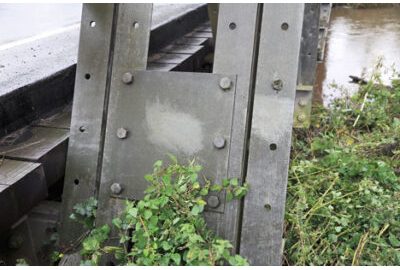Have you ever wondered what is going on with rusty steelwork? Why it happens and even what it is exactly? Well here’s a rust refresher to remind you how the reaction ocurrs and when you need to worry about it.
A costly reaction that starts as soon as you expose steel
At its most basic, rust is a simple reaction of steel with oxygen in the presence of water. It is an ordinary metallurgical reaction, but a costly reaction to correct.
Steel is versatile, flexible and strong, a vital national asset that benefits from being protected from day one.
The reason rust presents so often in our built environment, infrastructure and industrial projects, is largely due to the strengths not the weaknesses of steel, perhaps our most popular construction material.
As the backbone of most modern industrial economies, steel is versatile, flexible and strong, a vital national asset that benefits from being protected from day one, because as soon as you expose steel to the elements, it begins to corrode.
In some respects the corrosion is merely the alloy returning to its original form, iron oxide, which is why rust is reddish in colour.
The corrosion reaction can vary as we will discuss later, but in general the rust process is denoted as follows:
4Fe + 2H2O + 3O2 = 2Fe2O3 H2O
(rust)
(rust)
Whilst rust is primarily hydrated ferric oxide, it can contain other compounds, meaning that in fact there exists a variety of rusts, which can have a wide range of compositions. So the thing about rust is that the exact composition of a particular corrosion product depends on the make-up of the alloy and the conditions under which it is formed. It is fair to say therefore, that typical compositions cannot be given.
Analysis of a range of rusts shows that air-formed rusts generally contain about 5 % of compounds other than Fe2O3 H2O.
Salts may be almost impossible to remove
Sulphur dioxide plays an additional role in corrosion especially in industrial areas. SO2 in industrial effluent reacts with moisture in the air to form acids, which react with the steel to form salts like ferrous sulphate.
Time-lapse of rust on mild steel
These salts tend to form in shallow pits at the steel surface and the corrosion process is such that the sulphates tend to move inwards to the anodic areas, which are likely to be in crevices, the bottom of pits, etc.
Unlike ferric oxide, these salts are also not ‘rust’ coloured, being white or light coloured. They are very difficult, if not impossible, to remove with tools such as scrapers and wire brushes and are often difficult to remove even with blast-cleaning.

The presence of salts such as ferrous sulphate leads to rather complex reactions involving the regeneration of the sulphuric acid from which they were formed. This in turn causes further corrosion and the production of more rust. As rust has a considerably greater volume than the steel from which it is produced, this can lead to disruption of any coating applied over it by cracking, blistering and eventually flaking.
Chorides, the bigger threat
Near the coast, chlorides are likely to be a greater problem that sulphur dioxide. Chlorides are hygroscopic, i.e. they absorb moisture. It has been shown in laboratory tests that whereas rusting with sulphates may occur at relative humidities below 70%, the presence of chlorides in rust can result in corrosion of the steel at relative humidities as low as 40%. Chlorides may, therefore, be a greater immediate problem than sulphates.
Consider the environment that the steel is to be placed within on day one and provide the necessary protection, in order to avoid lengthy and costly on site maintenance.
Both the sulphuric reaction and chloride reactions are cyclical processes or chain reactions which is why left unprotected and dependant upon the environment, superficial rust seen on steel will perpetuate to affect the integrity of the steel section. It is best to consider the environment that the steel is to be placed within on day one and provide the necessary protection, in order to avoid lengthy and costly on site maintenance.



Join the conversation
Make a comment